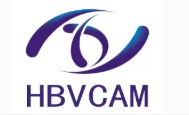In today’s rapidly evolving educational landscape, distance learning has become a vital component of modern teaching methodologies. The “School distance learning webcam” serves as an essential tool that bridges the gap between traditional classroom environments and remote education, enhancing the learning experience for students and educators alike. With the shift to online platforms necessitated by recent global events, the adoption of high-quality webcams has transformed how lessons are delivered, making learning more accessible and engaging.
From an expertise perspective, the effectiveness of distance learning hinges on the ability of teachers to convey information clearly and interactively. High-definition webcams facilitate real-time communication, enabling educators to monitor student engagement and respond to questions instantly. These advanced devices are often equipped with features such as wide-angle lenses, autofocus, and built-in microphones to enhance audio-visual quality. Such technology empowers educators to replicate the in-person learning experience, fostering an environment conducive to active participation and collaborative learning.
Experience plays a significant role in the successful implementation of distance learning through webcams. Educators who utilize these tools often undergo training to maximize their potential. Knowledge of various software platforms, coupled with an understanding of how to integrate webcam technology seamlessly into lesson plans, gives teachers the confidence to deliver effective online instruction. Furthermore, feedback from students and parents indicates that classes conducted with quality webcams tend to result in higher satisfaction rates and improved learning outcomes, underscoring the importance of hands-on experience in utilizing this technology.
Authority in the realm of distance learning is also a critical factor. Educational institutions that endorse and invest in high-quality video conferencing solutions demonstrate a commitment to providing a robust learning experience. They often collaborate with technology providers to offer the most reliable equipment, reinforcing their position as leaders in the educational field. Additionally, the growing body of research supporting the effectiveness of webcam-based learning reflects a commitment to informed decision-making in educational practices.
As schools continue to navigate the challenges of distance education, the role of the distance learning webcam has become increasingly indispensable. The integration of this technology not only enhances the quality of education but also prepares students for a future where digital proficiency is paramount. By investing in advanced webcam solutions, educational institutions position themselves as pioneers in fostering innovative learning environments that prioritize accessibility and engagement.
